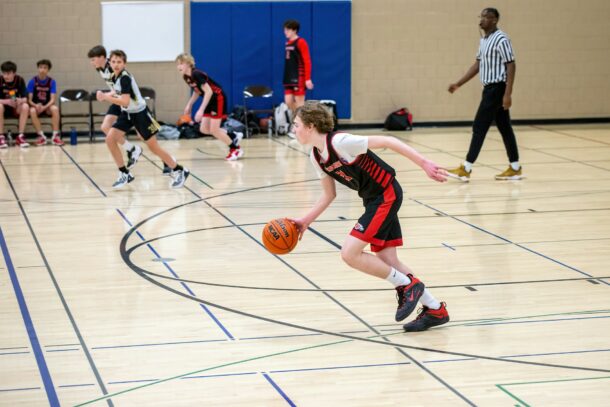Heading into a new season, basketball coaches juggle a number of important responsibilities. Hopefully, coaches used the offseason to better themselves in preparation for the new year. But no matter what level a coach find him or herself coaching at, setting up the right basketball playbook for the team remains an integral step.
Coaches can use the offseason to accomplish several different goals, including becoming a better leader. Often times, evaluating last season’s performance comes at this point, as well as fine tuning the approach to practice planning. But setting up the team’s playbook should also be an important exercise.
Keys to a Good Basketball Playbook
A playbook crystalizes a team’s offensive and defensive approach. It helps build the team’s identity and provides a path to in-season success. Laying out the different sets and plays before hand can often help with drill selection and practice flow. Coaches seek to teach these sets and plays in order to leverage a team’s strengths, both from an individual and a collective perspective.
Any good basketball playbook relies on two relatively broad offensive categories. Those categories are: Man-to-Man Offense, Zone Offense and Specials.
- Man-to-Man Offense: Teams execute these plays against man-to-man defenses, where each defensive player guards one offensive player. These plays aim to create opportunities for offensive players with staples such as the use of pick-and-rolls.
- Zone Offense: Teams execute these plays against zone defenses, where defenders patrol specific areas in the half court rather than matchup one-on-one. These plays seek to leverage space, movement, and mismatches to create scoring opportunities.
- Specials: Specials are those plays designed for specific situations in a given game. The most common offensive specials include Baseline Out of Bounds (BLOB) plays, Sideline Out of Bounds (SLOB) plays, and Press Breakers.
Fundamental Actions in a Good Basketball Playbook
Any basketball coach, no matter the level, should implement fundamental actions into their playbook. These actions often create the foundations for more complex plays and sets in a given offensive strategy. These actions should be incorporated in even the simplest youth basketball playbook.
- Pick and Roll: The pick-and-roll remains the most recognizable offensive action at any level of basketball. In this action, an offensive player sets a screen (or pick) for the ball handler. The ball-handler reads the defense before deciding his or her next move, either driving to the basket or making a pass. The screener in this action rolls to the hoop and prepares to receive a pass, whether that pass is coming or not. This action remains a staple of any man-to-man offense.
- Pass and Cut: Pass and cut is an offensive tactic in which a perimeter player with the ball passes to a teammate then executes a cut, typically towards the hoop. This basic action looks to draw attention from the defense and limit rotations or overplays. The pass and cut approach works for both man-to-man offenses and zone offenses.
- Ball Reversal: The ball reversal action in basketball involves an offense working the ball via pass from one side of the court to the other. When executed properly, this action forces a defense to scramble and can create openings for cutting lanes or jump shots. This action can work against either defensive setup, but it is most effective against aggressive zone defenses.
Tips for Building a Basketball Playbook
No basketball playbook is created equal. Coaches should assess the skill level of their players before making definitive choices for their offensive approach. There’s such a wide variety of plays that coaches can certainly find something that will work for their team. But when building a playbook, youth basketball coaches should consider the following three tips.
- Start Simple. This is particularly true if a coach is dealing with newcomers to the sport or relatively inexperienced youth teams. Players will perform all the better as beginners when they aren’t too slowed by thinking about the next action in a play. Layering skills and actions in practice can often set up more complex plays later in the season.
- Embrace Space. One of the key skills young players need to develop is being able to move without the ball. Using the full court for drills and conditioning is a must for coaches, especially at the youth level. When designing a playbook, getting players to understand spacing will improve the effectiveness of each set. This is especially true against zone defenses.
- Add Variety. Experienced basketball coaches sport deep playbooks, pulling sets to combat specific defenses. Newer basketball coaches need to remember that incorporating a variety of plays into the playbook will help keep players engaged and prevent opponents from keying on tendencies. Avoid becoming predictable at all costs.
Click HERE for a TeachHoops Playbook Template.
Related: 3 Effective Full Court Basketball Drills
Resources:
Coach Unplugged Podcast:
Ep 1356 10 Keys to A Good Zone Offense
Ep 1318 Picking an Offense and Full Court Pressure Discussion
If you found this useful, don’t forget to check out additional blog posts at TeachHoops.com. Also, check out TeachHoops on Facebook, Twitter, Instagram and YouTube.







